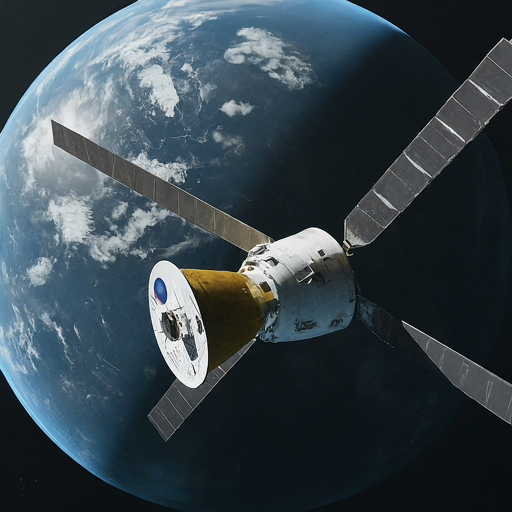
Orion is NASA’s Spaceship to Take Humans Back to the Moon
In a not-so-distant future, NASA is gearing up for an epic journey back to the moon. It’s not just any trip, but a cutting-edge adventure with a brand-new spaceship leading the way. This spaceship, called Orion, is like something out of a sci-fi movie, but it’s real, and it’s happening next year!
Orion isn’t just any spacecraft; it’s the brainchild of collaboration between NASA and the European Space Agency (ESA). Together, they’ve built a tall, sleek vehicle that’s ready to take four lucky astronauts on a historic ride around the moon.
Recently, ESA shared an exciting image of Orion as it was being prepped for a crucial test. This test will expose the spaceship to extreme conditions similar to those in outer space. It’s like a dress rehearsal before the big show!
So, what’s the plan? Well, the upcoming mission, known as Artemis II, will be a game-changer. The astronauts will hitch a ride on NASA’s powerful Space Launch System (SLS) rocket, which is even mightier than the one that first sent humans to the moon decades ago.
During Artemis II, the crew will circle the moon but won’t touch down. Instead, they’ll zoom back to Earth, braving a scorching descent through the atmosphere. It’s going to be intense, with temperatures soaring to a blistering 5,000 degrees!
Why the delay from NASA’s original schedule? Safety first, of course! NASA wants to ensure everything is perfect before sending humans into space. They’ve encountered a few hiccups, like unexpected damage to Orion’s heat shield during a previous test flight. But they’re working hard to fix any issues and make sure the journey is as safe as possible.
But this mission isn’t just about adventure; it’s about building a future on the moon. NASA isn’t just visiting; they’re planning to stay. For the first time ever, astronauts will explore the lunar south pole, a place rich in resources like water ice. This ice could be vital for fuel and drinking water, making it the perfect spot for a moon colony.
Also Read: Data Science Interview Essentials: Basics to Proficiency
So, get ready for liftoff! NASA’s new spaceship is about to make history, paving the way for a future where humans live and work beyond the bounds of Earth. It’s an exciting time for space exploration, and we can’t wait to see where Orion takes us next!
Q&A
Q: What is the name of the new spaceship that will take humans back to the moon?
A: The new spaceship is called Orion.
Q: How many astronauts will Orion carry on its journey to the moon?
A: Orion will carry four astronauts on its journey around the moon.
Q: What role did the European Space Agency (ESA) play in the development of Orion?
A: ESA helped build the Orion spacecraft, particularly the European Service Module, which provides vital functions such as electricity, propulsion, thermal control, air, and water.
Q: What is the name of the upcoming mission that will mark the return of humans to the moon?
A: The upcoming mission is called Artemis II.
Q: What is the purpose of Artemis II, and what will the astronauts do during this mission?
A: The purpose of Artemis II is to orbit the moon. The astronauts will not land on the moon but will instead loop around it before returning to Earth.
Q: Why did NASA postpone the Artemis II mission from its original schedule?
A: NASA postponed the Artemis II mission to address safety concerns and ensure that any issues, such as unexpected damage to Orion’s heat shield, are resolved before sending astronauts into space.
Also Read: Legacy of Peter Higgs and the Discovery of the Elusive ‘God Particle’
Q: What distinguishes NASA’s current lunar missions from the legendary Apollo missions of the past?
A: Unlike the Apollo missions, NASA’s current lunar missions, including Artemis II, aim to establish a permanent human presence on and around the moon. Additionally, these missions will explore new regions, such as the lunar south pole, believed to contain valuable resources like water ice.
